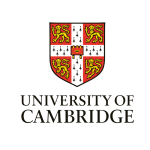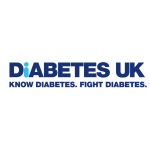Dietary Impact on Systolic and Diastolic Blood Pressure
Understanding the difference between systolic and diastolic blood pressure is essential for hypertension management.
The amount of pressure on your artery walls when your heart beats is referred to as systolic blood pressure, whereas diastolic blood pressure is the pressure when your heart is at rest between beats.
A high blood pressure diet rich in fruits, vegetables, and lean meat while low in processed foods, trans fat, and sodium can help regulate both systolic and diastolic pressures.
Systolic pressure typically rises with age due to the increasing stiffness of large arteries in the body. However, a balanced diet can help maintain healthy systolic blood pressure levels.
A diet rich in lean meat such as chicken or fish provides high-quality protein necessary for maintaining healthy blood vessels, preventing systolic blood pressure.
Diastolic blood pressure can also be positively impacted by dietary changes. Consuming less processed food and foods high in trans fat can result in lower diastolic pressure.
Processed foods are often loaded with sodium, which can increase blood pressure, while trans fats contribute to higher cholesterol levels, which can lead to hypertension.
The Role of Exercise in Disease Control
As mentioned previously, diet is a crucial aspect of managing blood pressure, however it should be combined with regular physical activity for optimal results.
Exercise helps control weight, a major risk factor for hypertension. It also aids in maintaining a healthy heart and blood vessels, crucial for sustaining normal blood pressure levels.
Exercise strengthens the heart, allowing it to pump blood more efficiently. It also aids in the control of systolic blood pressure.
The National Health Service (NHS) of the United Kingdom recommends at least 150 minutes of moderate aerobic activity or 75 minutes of vigorous activity per week, as well as strength exercises two or more days per week.
However, it’s important to speak with a healthcare provider before starting a new exercise regimen, especially for those with high blood pressure or other health conditions.
This is because some activities, such as weightlifting, may not be suitable for people with high blood pressure as it can temporarily raise blood pressure during the exercise.
Bear in mind that it’s not about how hard you work in one session, but rather making exercise a regular and consistent part of your routine. Combining this with a diet low in processed food, sodium, and trans fat can aid in overall disease control, including hypertension.
Heart Attack Risks and High Blood Pressure Diet
A high blood pressure diet does more than just manage hypertension. It can also significantly reduce the risk of heart attacks.
Heart attacks occur when the flow of blood to a specific part of the heart is obstructed, most commonly by a blood clot. High blood pressure can contribute to this by causing artery damage and blockage.
Lowering sodium intake is a critical dietary change to reduce heart attack risks. High sodium intake can lead to water retention, causing an increase in blood pressure and strain on the heart.
To combat this, you should consume foods high in potassium, such as fruits and vegetables, as it can help balance out the effects of sodium and lower blood pressure.
Similarly, reducing consumption of processed foods and fatty meats can lower cholesterol levels, another risk factor for heart attacks.
Trans fat is commonly found in processed foods, and it raises your bad (LDL) cholesterol while decreasing your good (HDL) cholesterol. Consuming lean meats and omega-3 fatty acid-rich foods can help improve heart health.
Lastly, you can decrease the likelihood of heart attacks by maintaining a healthy weight. Obesity is a major risk factor for heart disease, and a balanced diet can aid in achieving and maintaining a healthy weight.
Coupled with regular blood pressure readings to monitor progress, a high blood pressure diet can help safeguard against heart attacks.






















